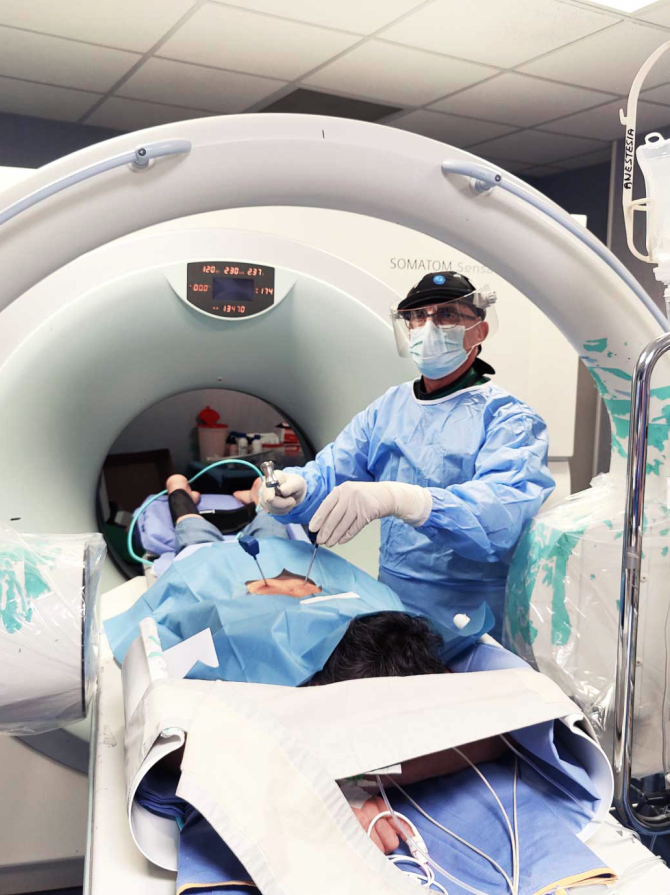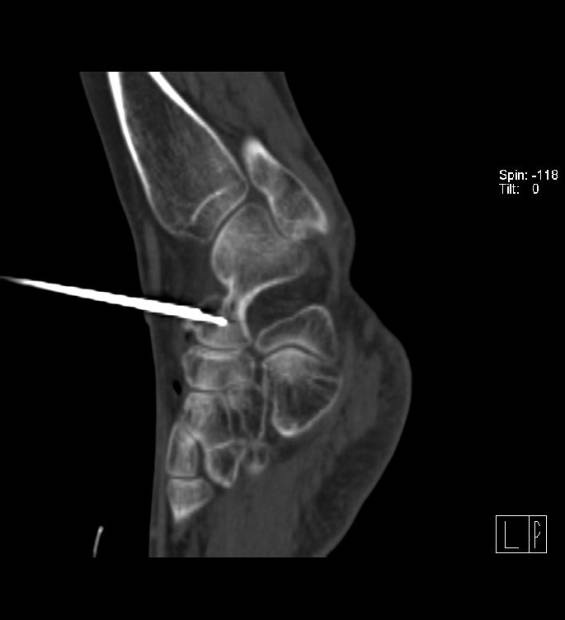
Soluzioni Minimamente Invasive
il nostro team è specializzato nella gestione minimamente invasiva
di tumori complessi che coinvolgono più organi.


Radiologia Interventistica
I vantaggi della Radiologia Interventistica
è una branca specialistica della radiologia che utilizza principalmente tecniche minimamente invasive e guidate da immagini per diagnosticare e trattare varie patologie, offrendo alternative efficaci ai trattamenti chirurgici tradizionali.
Con oltre 20 anni di esperienza, il nostro team è specializzato nel trattamento minimamente invasivo di tumori complessi che coinvolgono più organi.
- Minimamente Invasivo
- Ricoveri Ospedalieri Di Breve Durata
- Recupero Rapido
- Efficacia
- Migliorare La Qualità Della Vita
Come Funziona

I Nostri Servizi
La nostra esperienza comprende terapie quali l'ablazione tumorale (termica e non termica), la biopsia percutanea e la stabilizzazione ossea complessa per affrontare la fragilità strutturale causata dalla malattia metastatica.
Crioablazione
Tecnica medica innovativa utilizzata per distruggere il tessuto tumorale mediante congelamento.
Elettroporazione
Ablazione tumorale non termica in prossimità di strutture anatomiche critiche.
Termoablazione
Distruzione dei tumori mediante calore utilizzando Radiofrequenze o Microonde.
Trattamenti Complessi e Multi-Organo dei Tumori
Soluzioni integrate per tumori avanzati o anatomicamente complessi.
Stabilizzazione Ossea e Controllo Delle Patologie Ossee Locali
Alleviare il dolore, prevenire le fratture e ripristinare la stabilità delle ossa indebolite.
Incontra i Nostri Specialisti
Venite a conoscere i nostri specialisti esperti dedicati alla fornitura di cure oncologiche avanzate.

Claudio Pusceddu
Radiologo Oncologo Interventista
Esplora le storie dei pazienti
Leggi le esperienze reali dei nostri pazienti
Ottimo medico se avete bisogno che un vostro familiare riceva assistenza immediata ed efficace, una visita, un trattamento di emergenza o una semplice consulenza. Grazie mille!
Andrew Morris
Guarda Le Nostre Procedure in Azione
Scoprite i nostri trattamenti minimamente invasivi e di precisione, progettati per migliorare l'assistenza ai pazienti e i risultati clinici.

